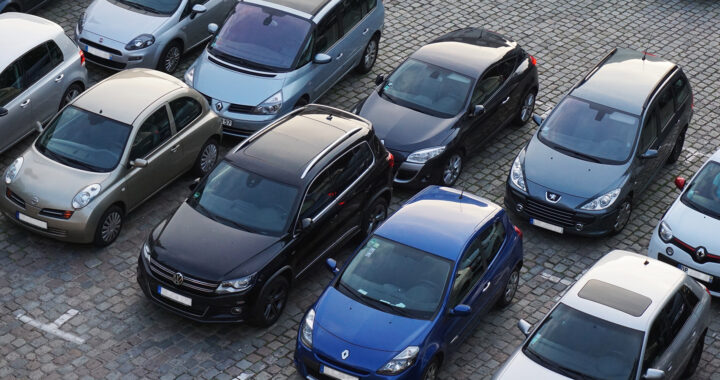Urban heat islands are often associated with the dominance of concrete, asphalt, and limited greenery. A particular study, however, revealed a frequently ignored factor contributing to elevated city temperatures: parked vehicles. Researchers M. Matias et al. have shown that vehicles, particularly darker colored ones, significantly intensify localized heating and alter microclimate conditions across urban areas. Their paper was published online on 5 August 2025 in the journal City and Environment Interactions.
Parked Vehicles, Especially Dark-Colored Vehicles, Identified as Significant Contributors to Urban Heat Island Effect
Background
Urban heat islands emerge when cities accumulate and retain more heat than surrounding rural landscapes due to dense infrastructure, asphalt, and limited vegetation. Urban heat sinks refer to surfaces that absorb and store this energy. Buildings are a common example. These heat sinks release warmth into the environment and intensify urban heating.
The researchers conducted a microscale field experiment in Lisbon during peak summer heat in July 2024. They parked a black car and a white car in an asphalt lot and measured air temperatures around and above the vehicles under conditions of strong solar radiation and minimal wind. Field measurements were integrated with parking and traffic data across Lisbon.
Sensors were specifically positioned at strategic points, including 20 centimeters from the sides, 1 meter away from the vehicles, and at varying heights above the roofs, ranging from fractions of a centimeter to one meter. These readings were compared against baseline temperatures from the surrounding asphalt to quantify thermal differences.
Findings
• Black Cars Intensify Local Heating: Air around the black car was measured up to 3.8 degrees Celsius hotter than adjacent asphalt, with the greatest increase occurring 20 centimeters above the roof. This indicated that dark-colored or darker vehicles create localized heat islands in direct sunlight.
• White Cars Have Minimal Effects: The white car demonstrated minimal warming and sometimes cooler or neutral conditions compared to asphalt. This indicated that white-color cars and other light-colored vehicles can mitigate localized heating through higher reflectivity and reduced solar absorption.
• Role of Vehicle Color and Albedo: Dark surfaces like black reflect only 5 to 10 percent of incoming sunlight, while white surfaces reflect as much as 85 percent. This significant contrast highlights the central role of albedo in determining the contribution of a vehicle to air and ambient temperature increases.
• Vehicle Materials Accelerate Heat: Car exteriors are made of thin metal, glass, and plastic that heat quickly and radiate warmth intensely. This creates rapid air temperature rises above and around parked cars, contrasting with asphalt surfaces that heat more slowly and release energy gradually.
Implications
Data gathered in Lisbon revealed that parked vehicles can occupy approximately 6 to 10 percent of total road surfaces in its most dense districts. This proportion may seem minor in isolation, yet when multiplied across extensive neighborhoods, it represents a substantial thermal influence that traditional urban heat island research has frequently overlooked.
It is also interesting to note that a fleet of vehicles composed of white-colored and lighter-colored vehicles would nearly double the reflectivity of some districts. This reduces solar energy absorbed at ground level and can even lower overall urban heat accumulation at a relatively low cost compared to large-scale infrastructure modifications.
The researchers outlined several practical strategies for mitigation. These include incentivizing the purchase of lighter-colored vehicles, constructing shading structures in large parking areas, applying high-reflectance pavements to reduce solar absorption, and expanding urban greenery through trees, vertical vegetation, and green roofs to provide cooling.
FURTHER READING AND REFERENCE
- Matias, M., Mills, G., Silva, T., Girotti, C., and Lopes, A. 2025. “The Underestimated Impact of Parked Cars in Urban Warming.” City and Environment Interactions. 28: 100232. DOI: 1016/j.cacint.2025.100232





